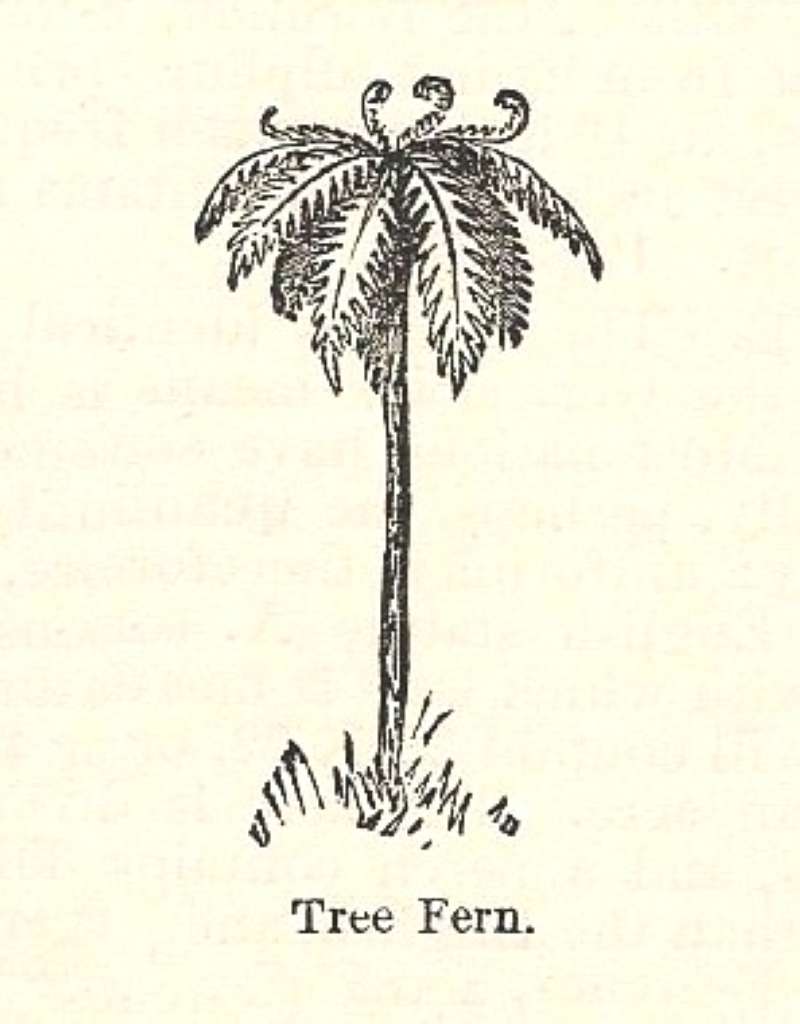SPECIES INFO
Tree ferns are generally placed in the family Cyatheaceae. They are found Pan Tropical. There are probably about 600 valid species in this family. Cyathea arborea of tropical America can reach to almost 50 feet. Cyathea australis of northern Australia can reach to almost 60 feet.
The ferns in the order Cyatheales are found in the tropics in both the Old and New World. There are probably about 1,000 species of ferns in this order. Many species are very local in their distribution. The tree ferns are included herein.
Ferns (Class Filicinae) are normally divided into four different orders. This class includes the vast majority of the plants in the Pteridophyta phylum. Although it is easy to estimate or count the number of species in most of the smaller classes in the Pteridophypta phylum, we hesitate at estimating the number of world wide or North American species in this class. The reason is that this class can be divided into two different classes, and different scientists who estimate counts might be using different criteria.
These plants have large foliaceous leaves. They utilize spores in their reproduction cycle.
Fern Phylum (Pteridophyta) is a large group of primarily tropical plants that typically reproduce by a complicated process involving spores. There are typically two different generations involved in the reproductive process.
Although Ferns have vascular tissue, they are separated from the seed plants in that ferns grow directly from the fertilized zygote. There are probably over 9,000 species in this group worldwide. In prehistoric times, this phylum was the predominant plant phylum on earth. Most of the coal and oil used for energy today derives from this phylum.
Although they are still numerous in moist areas, ferns have generally been replaced by seed plants. Most ferns are small to medium-sized plants. However, there are tree ferns in the tropics.
The Fern phylum is divided into several classes including:
Horsetails - Class Articulate or Class Equisetinae
Club Mosses - Class Lycopodiinae
Psilotes - Psilotinae Class
Quillworts - Class Isoetinae
Ferns - Class Filicinae
The first four classes are very primitive when compared to the last or fern class. Some authors have suggested that the fern class is more closely related to the seed plants than the first four classes.
Kartesz finds 27 different families in the Pteridophyta. He finds 893 full species growing in greater North America, including Hawaii, Puerto Rico, the Virgin Islands, and Greenland.
Plant kingdom contains a large variety of different organisms including mosses, ferns, and seed plants. Most plants manufacture their energy from sunlight and water. Identification of many species is difficult in that most individual plants have characteristics that have variables based on soil moisture, soil chemistry, and sunlight.
Because of the difficulty in learning and identifying different plant groups, specialists have emerged that study only a limited group of plants. These specialists revise the taxonomy and give us detailed descriptions and ranges of the various species. Their results are published in technical journals and written with highly specialized words that apply to a specific group.
On the other hand, there are the nature publishers. These people and companies undertake the challenging task of trying to provide easy to use pictures and descriptions to identify those species.

